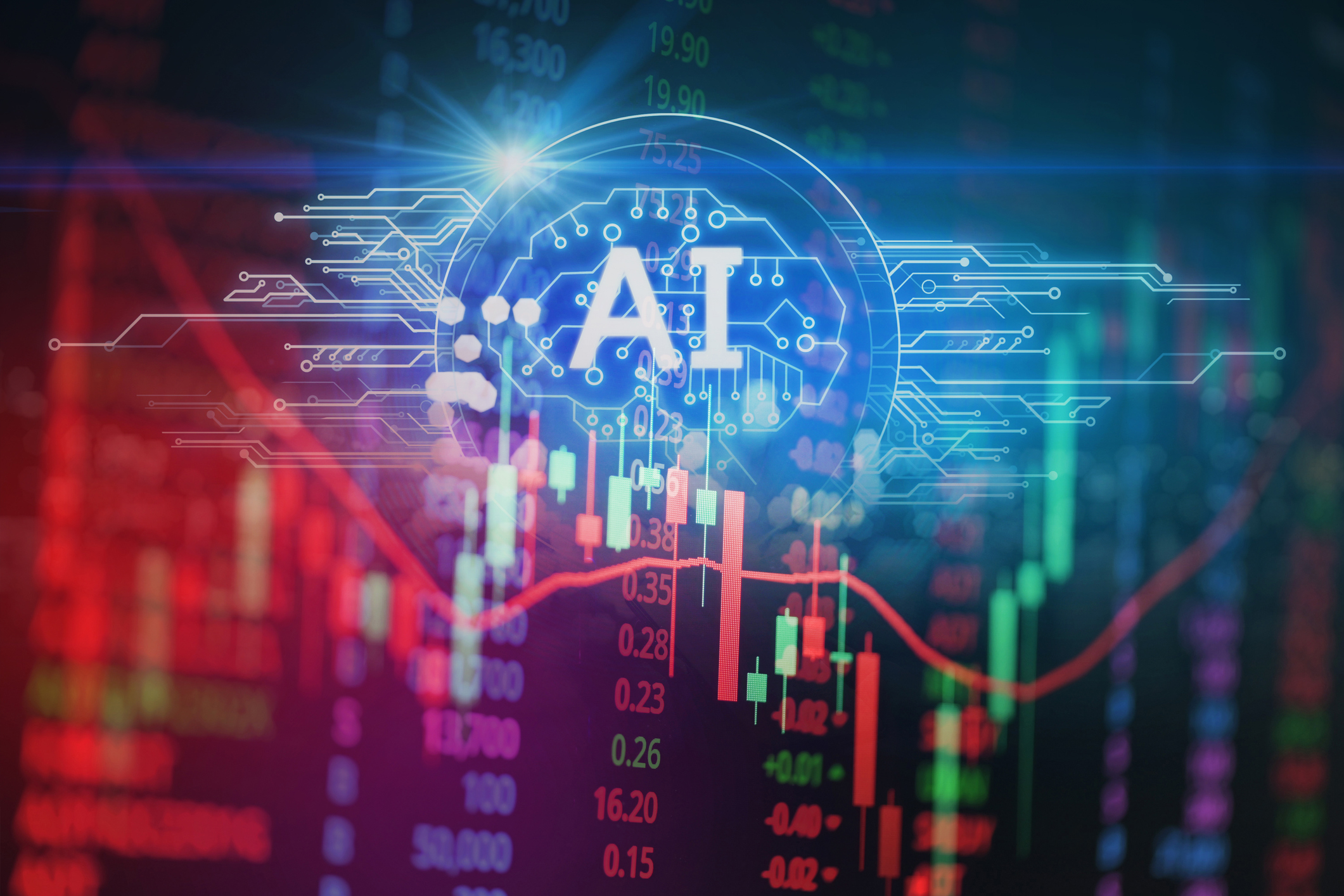Kiplinger Special: The Long-Term Future of the U.S. Economy
Kiplinger's report into what it will take to maintain a healthy economic growth rate.

To help you understand what is going on in the economy and beyond, our highly experienced Kiplinger Letter team will keep you abreast of the latest developments and forecasts (Get a free issue of The Kiplinger Letter or subscribe). You'll get all the latest news first by subscribing, but we publish many (but not all) of our forecasts a few days afterward online. Here’s the latest...
Instead of looking ahead to the next quarter or next year, let’s explore how fast the economy can grow in the long run, this decade and beyond. Over a long stretch of time, small jiggles in GDP growth can spell the difference between broad prosperity and hardship, or between the government being able to pay its debt and getting overwhelmed by red ink. This special report takes a look at the factors that govern the economy’s potential, and what could alter them.
Imagine an economic speed limit: The fastest pace growth can maintain without sparking inflation — the sweet spot where jobs are abundant, incomes rise, but price increases stay modest. It’s the benign economic climate the Federal Reserve is forever seeking: Low unemployment. Stable, low inflation.
From just $107.88 $24.99 for Kiplinger Personal Finance
Become a smarter, better informed investor. Subscribe from just $107.88 $24.99, plus get up to 4 Special Issues

Sign up for Kiplinger’s Free Newsletters
Profit and prosper with the best of expert advice on investing, taxes, retirement, personal finance and more - straight to your e-mail.
Profit and prosper with the best of expert advice - straight to your e-mail.
The speed limit has two basic pieces: How fast the workforce expands. And how quickly worker productivity grows. We are glossing over a lot. But the simple formula for growth is more workers and more output per worker. Economies with rapidly growing populations can boost GDP by simple increases in the number of new workers. Aging nations can keep GDP rising by finding ways to make workers more productive. Ideally, you have both sources of growth.
Of the two, workforce growth is simpler to project. We know the number of babies being born each year, average lifespans, average retirement ages, etc. Aside from the hiring surge as the economy reopened from COVID-19, the labor pool in the U.S. is rising about 0.5% per year. It’s been slowing for a long time now.
In the decade prior to the pandemic, the rate was 0.7%. By the end of this decade, it’s likely to fall to 0.4% per year. By 2045: About 0.2%. Note that the current downtrend includes immigration, both legal and illegal. Future immigration policies could nudge total workforce growth up or down a bit. But the downturn in the domestic birthrate appears entrenched, no matter what.
Productivity gains are trickier to forecast. But there, the outlook is better. Output per worker had been rising by 1.5% annually for a decade and a half. Lately, it’s drifted higher. The scramble to adopt remote work and sell more goods via the internet during and after the pandemic likely led to efficiency pickups that are still playing out. For instance, replacing some in-person meetings that used to entail time-consuming travel or commutes with videoconferences. Or helping brick-and-mortar stores serve as fulfillment centers for online sales.
Pushing productivity up is key to lifting long-run GDP growth potential from its current 2% to a healthier level since the labor force is unlikely to grow by more than a tiny fraction of a percent after the post-COVID hiring surge ebbs.
In earlier times, productivity boosts often came from greater education of the workforce — more people going to college or vocational training programs. Going forward, technological progress is likely to be more important, since education levels in the U.S. are already fairly high. Previously, efficiency gains related to the proliferation of the internet in the 1990s goosed productivity gains, first among manufacturers and then across the services economy in the 2000s.
Economy growth boosters

Artificial intelligence has the potential to be this decade’s internet: A huge technical advance that makes workers far more productive and lifts the economy’s speed limit. While there is undoubtedly lots of hype about AI and how it’s going to transform everything, it does look like a candidate for enabling genuine, far-reaching efficiency gains across many jobs and sectors.
It’ll take time to play out. Remember, the revolution in digital computing took about half a century from the earliest machines to widespread consumer use. But AI is already ramping up business spending on AI-specific chips for servers and personal devices, as tech companies rush to prepare for a flood of future AI applications. Purchases of the graphical processing units and other gear needed to run AI programs could push up growth in the country’s capital stock (i.e., its combined productive assets, from factories to server farms). Today, growth in capital stock is running at about 2% per year. By decade’s end, it could hit 3%. More and better capital equipment doesn’t guarantee greater worker productivity. But it is generally a precursor that enables firms to get more done per employee.
Hype aside, there are already early signs of how AI will boost efficiency. One recent study found that software writers who used AI to help write code got an assignment done 56% faster than their counterparts doing all the work themselves. Another showed that admin workers using ChatGPT spent 40% less time on a task. A customer support firm got customer issues resolved 14% faster with AI assistants. These initial anecdotes could be the first harbingers of widespread gains to come.
Remote work, which mushroomed during the pandemic, is another tech innovation that could get more out of the labor force. It doesn’t work for many types of jobs, of course. And many employers are skeptical about it, even for the knowledge-based office roles that are most amenable to telecommuting.
Some employers that relied on it during COVID-19 have walked back remote policies, either requiring full-time, in-office work, or hybrid schedules with some time in the office. The upside: Remote work is helping more people juggle jobs and child care. Especially mothers of young kids. The female workforce participation rate has risen a full percentage point in the past two years, mostly due to more hiring of mothers with kids under age 6. It seems that even hybrid schedules make it tenable for more moms to work, which could grow the labor force as population growth slows. The number of jobs involving partial remote work has risen by a third in the past year, to 20 million, while fully remote jobs (13 million) have held steady over that time.
The economical stakes
Economic figures can sound academic. Let’s make these more practical, by considering the real-world impacts of an economy growing faster vs. slower. A surprising amount is riding on small differences when you compound them over time.
3% growth makes the national debt a far more bearable problem, for example. The debt, now at a worrisome 99% of GDP (a figure that doesn’t include obligations for Social Security and Medicare), is on track to hit 109% by 2030. With growth of 3% per year from 2025 to 2030, the debt would reach 102% of the larger GDP. Consider how much better a fast-growing economy feels for consumers. Growth averaged 3.8% in the 1990s after the 1990-91 recession. 239,000 jobs were added per month. In the 2010s (2.3% growth rate): Just 194,000 jobs per month.
Both fiscal stability and broad prosperity depend on growing the economy at a robust pace for the long haul. It’ll take innovation and creativity, but it can be done.
This forecast first appeared in The Kiplinger Letter, which has been running since 1923 and is a collection of concise weekly forecasts on business and economic trends, as well as what to expect from Washington, to help you understand what’s coming up to make the most of your investments and your money. Subscribe to The Kiplinger Letter.
Profit and prosper with the best of Kiplinger's advice on investing, taxes, retirement, personal finance and much more. Delivered daily. Enter your email in the box and click Sign Me Up.

David is both staff economist and reporter for The Kiplinger Letter, overseeing Kiplinger forecasts for the U.S. and world economies. Previously, he was senior principal economist in the Center for Forecasting and Modeling at IHS/GlobalInsight, and an economist in the Chief Economist's Office of the U.S. Department of Commerce. David has co-written weekly reports on economic conditions since 1992, and has forecasted GDP and its components since 1995, beating the Blue Chip Indicators forecasts two-thirds of the time. David is a Certified Business Economist as recognized by the National Association for Business Economics. He has two master's degrees and is ABD in economics from the University of North Carolina at Chapel Hill.
-
 Changes Are Coming for This Invesco Bond Fund
Changes Are Coming for This Invesco Bond FundThe Invesco BulletShares 2026 Corporate Bond ETF's bonds will mature in 2026. Here's what investors should do.
-
 What Science Reveals About Money and a Happy Retirement
What Science Reveals About Money and a Happy RetirementWhether you’re still planning or already retired, these research-based insights point the way to your best post-work life.
-
 7 Retirement Planning Trends: What They Mean for You in 2026
7 Retirement Planning Trends: What They Mean for You in 2026From government shutdowns to market swings, the past 12 months have been nothing if not eventful. The key trends can help you improve your own financial plan.
-
 Disney’s Risky Acceptance of AI Videos
Disney’s Risky Acceptance of AI VideosThe Kiplinger Letter Disney will let fans run wild with AI-generated videos of its top characters. The move highlights the uneasy partnership between AI companies and Hollywood.
-
 AI Appliances Aren’t Exciting Buyers…Yet
AI Appliances Aren’t Exciting Buyers…YetThe Kiplinger Letter Artificial intelligence is being embedded into all sorts of appliances. Now sellers need to get customers to care about AI-powered laundry.
-
 What to Expect from the Global Economy in 2026
What to Expect from the Global Economy in 2026The Kiplinger Letter Economic growth across the globe will be highly uneven, with some major economies accelerating while others hit the brakes.
-
 The AI Boom Will Lift IT Spending Next Year
The AI Boom Will Lift IT Spending Next YearThe Kiplinger Letter 2026 will be one of strongest years for the IT industry since the PC boom and early days of the Web in the mid-1990s.
-
 Shoppers Hit the Brakes on EV Purchases After Tax Credits Expire
Shoppers Hit the Brakes on EV Purchases After Tax Credits ExpireThe Letter Electric cars are here to stay, but they'll have to compete harder to get shoppers interested without the federal tax credit.
-
 Amid Mounting Uncertainty: Five Forecasts About AI
Amid Mounting Uncertainty: Five Forecasts About AIThe Kiplinger Letter With the risk of overspending on AI data centers hotly debated, here are some forecasts about AI that we can make with some confidence.
-
 Worried About an AI Bubble? Here’s What You Need to Know
Worried About an AI Bubble? Here’s What You Need to KnowThe Kiplinger Letter Though AI is a transformative technology, it’s worth paying attention to the rising economic and financial risks. Here’s some guidance to navigate AI’s future.
-
 Will AI Videos Disrupt Social Media?
Will AI Videos Disrupt Social Media?The Kiplinger Letter With the introduction of OpenAI’s new AI social media app, Sora, the internet is about to be flooded with startling AI-generated videos.